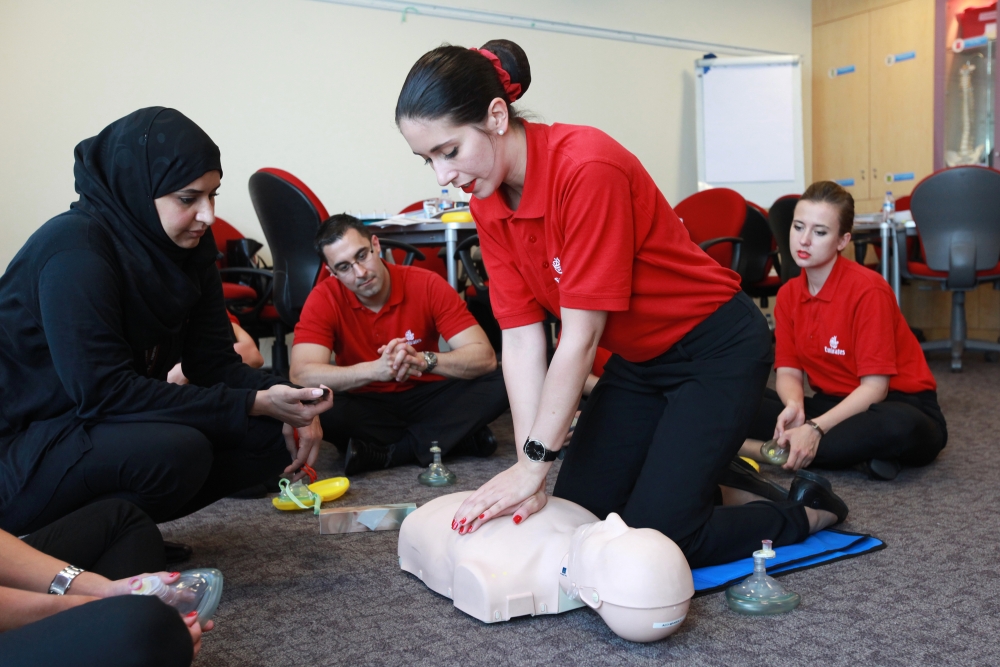Emirates reveals the real cost of medical diversions for an airline.
07 February, 2017
4 min read


Flight diversions due to inflight medical emergencies make up a tiny portion of the millions of flights operated annually, but it is costly for airlines. With more people traveling by air, the actual number of inflight medical events has been gradually increasing over the years.
Emirates, the largest airline by international traffic, operated over 3,500 departures a week, or more than 194,000 flights in 2016. In those 12 months, the airline handled more than 60 flight diversions due to medical emergencies.
A single flight diversion can cost Emirates anything from US$50,000 to over US$600,000, depending on the nature of the diversion which includes fuel, flight catering, landing and ground handling fees, air navigation cost, passenger rebooking costs and onward connection, as well as other associated costs to care for crew and passengers.
Adel Al Redha, Emirates’ Executive Vice President and Chief Operating Officer, said: “We can never hope to recover the costs of a flight diversion, but the wellbeing of our customers is always our number one priority. Airlines handle medical emergencies differently, as there are no international regulations on this front. If there is a medical emergency on board, our crew have the training and equipment to help them assess the situation, and deliver the best possible outcome for the affected passengers.”
Crew training and equipment
In 2016, Emirates delivered nearly 23,000 hours of medical training for cabin crew and pilots, ensuring they are ready to assist passengers on board.
All Emirates cabin crew go through a comprehensive initial training programme which is required by the UAE General Civil Aviation Authority, recurrent training to keep their skills up to date, as well as additional specific training for the use of on board medical equipment.
The medical training that Emirates cabin crew undertake includes both theory and practical aspects. It prepares them to recognise and deal with common situations, but more importantly handle rare but life-threatening events when time is of essence.
Topics covered include basic life support (CPR); medical conditions including asthma, heart disorders, seizures and allergic reactions; trauma related topics and even emergency childbirth amongst others. Pilots also attend training sessions covering topics such as Hypoxia, Malaria, Dengue, Trauma, CPR and choking and occupational health issues.
Emirates has also invested more than US$7 million in the installation of its medical equipment on board, with annual maintenance costs being a further US$1.7 million. Equipment on every Emirates aircraft include: emergency medical kits, oxygen bottles, resuscitators, a defibrillator, a telemedicine unit, and a 24/7, satellite medical advisory service that connects crew to specialist aviation medical consultants who can help assess the passenger’s situation in real time.
Making the right call
On average, Emirates’ crew make about 20 calls to the medical advisory service per 100,000 passengers flown. Most calls do not result in a diversion, but the professional consultation helps the operating crew to make better decisions and offer the right support to the affected passengers, particularly when there are no volunteer medical professionals on the flight.
Emirates’ in-house team of aviation medical specialists, flight planners and operations controllers, all work closely to conduct detailed scenario planning and regular updates to diversion protocols – in keeping with the airline’s growing global network, as well as advances in medical thinking, inflight medical technologies, and training techniques.
Mr Al Redha said: “If we have to divert a flight, our aim is to get medical attention for the afflicted passenger as soon as possible. Via our medical advisory consultants and Emirates’ own operations control team, we identify the best location where the passenger may receive appropriate care, and where the airport can adequately support the passengers and aircraft.
“The diversion location selected may be someplace where medical costs are expensive and travellers should consider procuring the appropriate insurance before they travel.”
Get the latest news and updates straight to your inbox
No spam, no hassle, no fuss, just airline news direct to you.
By joining our newsletter, you agree to our Privacy Policy
Find us on social media
Comments
No comments yet, be the first to write one.

